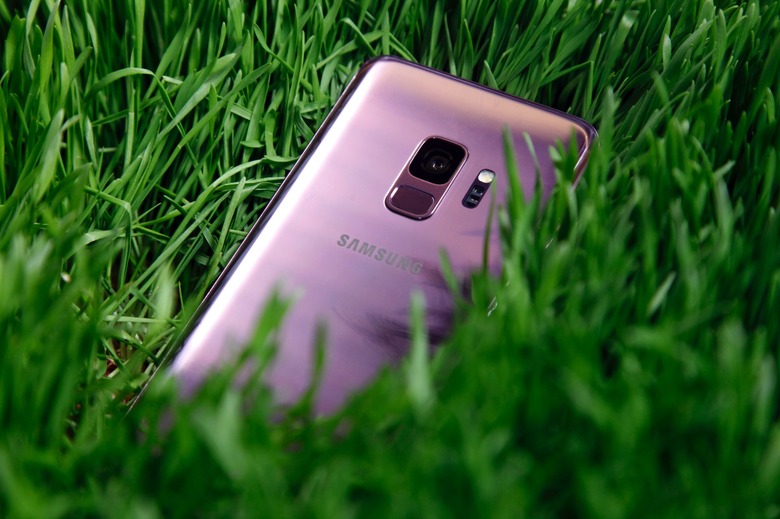No, Actually, The Galaxy S9 Doesn't Have The Exact Same Design As The Galaxy S8
Months of leaks and rumors appeared to paint a complete picture of Samsung's flagship Galaxy S9 and Galaxy S9+ flagship Android phones. But when Samsung finally unveiled them earlier this week, we learned that all of those leaks didn't actually paint a complete picture. The new flagship smartphones were branded "boring" ahead of their launch because Samsung had seemingly chosen to reuse last year's Galaxy S8 design for this year's new Galaxy S9. This notion was then exacerbated when a report emerged from an insider suggested that Samsung had actually been planning a substantial redesign for the Galaxy S9. The redesigned Galaxy S9 had reportedly reached the prototyping phase, but the company then cancelled it for reasons unknown.
Whatever the case, Samsung's new Galaxy S9 and Galaxy S9+ wound up launching with a design that is indeed quite similar to last year's Galaxy S8 and Galaxy S8+. Despite what you've read, however, the claim that it's the exact same design is false.
Like us, most technology journalists and bloggers who have spent time with the Galaxy S9 and Galaxy S9+ agree that the phones represent a significant update compared to their predecessors. Even those who have suggested that they're an "S" update akin to Apple's iPhone S updates acknowledge that the Galaxy S9 and S9+ offer tremendous improvements over last year's models.
The camera is the big news here, of course, with Samsung having made massive upgrades to its camera hardware as well as its software. Samsung had been using the same "Dual Pixel" camera in its flagship phones ever since it launched the Galaxy S7 in 2016, so it was certainly due for an update. Beyond the cameras, the Galaxy S9 and Galaxy S9+ also feature upgraded internal components that bring a big performance boost. In fact, Samsung has even achieved the unthinkable — the company's new Galaxy S9 outperforms Apple's iPhone X in some benchmark tests.
As far as design goes, the Galaxy S9 and S9+ are clearly less of an upgrade in this department. In fact, the phones are indistinguishable from their predecessors on the front side. The backs are also quite similar, though the fingerprint sensors are now centrally located and the larger Galaxy S9+ has a new dual-lens camera. But some coverage has practically suggested that the new Galaxy S9 and S9+ pack new components into the same old Galaxy S8 and S8+ housings, and that simply isn't the case at all.
First of all, the Galaxy S9 and S9+ aren't even made out of the same glass or metal as last year's models. Instead, Samsung used glass that is 20% thicker, and 7000 series aluminum that is far stronger. The phones should be more durable than the S8 and S8+ as a result, and they're also heavier in the hand. They feel sturdier and more premium as a result.
The dimensions of the Galaxy S9 and S9+ are also slightly different from their predecessors. Both new models are shorter and narrower than last year's flagships, and they're each half a millimeter thicker as well. The screens are the exact same sizes as last year's Galaxy S8 and S8+ though, which means that the bezels above and below them have been made smaller.
Samsung's more compact Galaxy S9 gets a 1.2mm total height reduction compared to the Galaxy S8, and it's thanks to a 0.48 mm smaller top bezel and a 0.72 mm smaller bottom bezel. The reduction is even more substantial on the Galaxy S9+, where the top bezel is 0.4 mm shorter and the bottom bezel is a full 1 mm smaller than the Galaxy S8+.
The end result is subtle, but it is noticeable when the phones are side-by-side. Samsung's Galaxy S9 and Galaxy S9+ offer even more immersive user experiences as a result of these changes.
